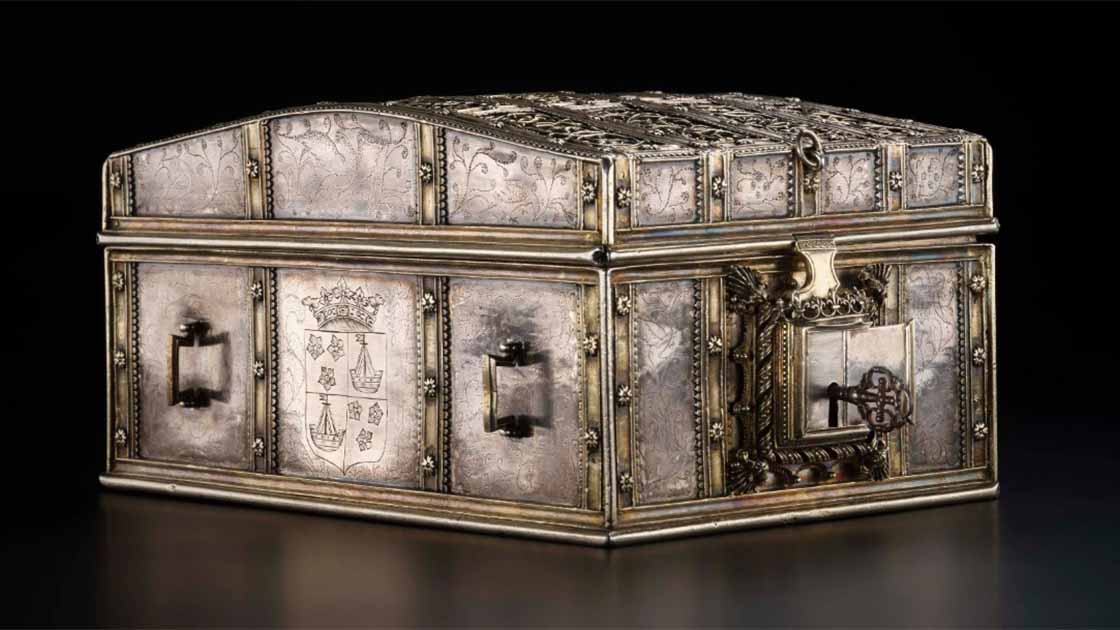The Beautiful Casket that Killed Mary, Queen of Scots
Mary I of Scotland, or Mary, Queen of Scots is one of the most iconic monarchs in British history. She had an incredible impact on both Scottish and English history, and her life was one of tragedy, romance, and drama. But did you know she is also partly responsible for one of the finest examples of a French silver casket we have today? Known as the Mary, Queen of Scots Casket, it is one of the few lasting caskets of its era, with no other examples being of such high quality. It was also a key artifact in the intrigue that led to her downfall.
The Origins of the Casket
The Mary, Queen of Scots Casket was made in Paris at the end of the fifteenth or early sixteenth century. We know this thanks to the two makers’ stamps that are embossed onto the external underside panel. The mark is of a crowned fleur-de-lis, identifying the casket as unmistakably Parisian. After 1506, King Louis XII ordered goldsmiths to start using a new mark, which means the casket was made before then. It is believed that the casket was given to Mary by her first husband, Francis II of France.
- Mary, Queen of Scots: Tragic Heroine or Conniving Conspirator?
- Scotland's Beheaded Queen, Mary Stuart, Made Immortal by Irish Digital Artist
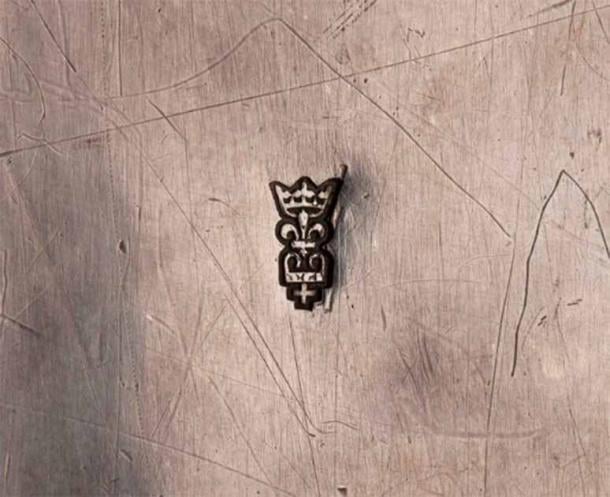
The fleur-de-lis marker on the bottom of the casket helped determine its French provenance and connection to Mary, Queen of Scots (National Museums Scotland)
The casket is intricately decorated, with what is known as strapwork on the lid. It features alternating wide bands of three-dimensional scrolling leaves and flowers, and narrower, flat bands of florettes.
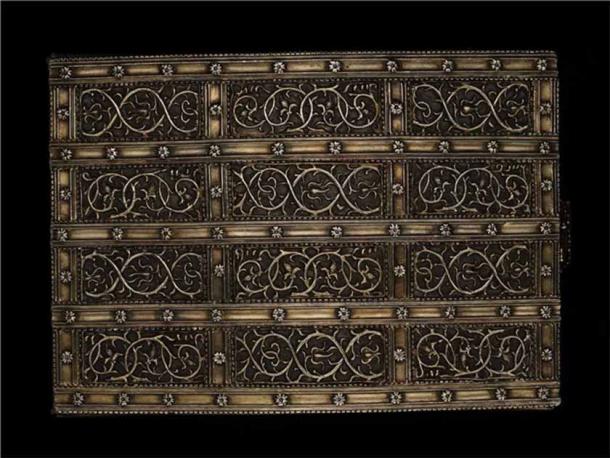
The casket is a beautiful example of French craftsmanship in the age of Mary, Queen of Scots. View of the strapwork and floral designs on the top. (National Museums Scotland)
Meanwhile, the sides are decorated with pinpricked birds, flowers, a rabbit, and a running stag, and dog. This work may have been added later, although we can’t say for certain.
- Mary Queen of Scots Received Luxury Treatment in Prison
- Queen Mary's Beads, Worn to Her Beheading, Have Been Stolen!
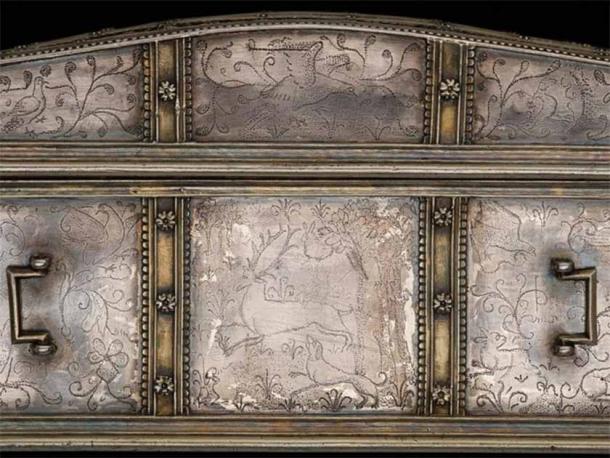
The Mary, Queen of Scots casket features delicate pinpricked outlines of various animals (National Museums Scotland)
On one side of the casket is an engraving of the coat of arms of the Dukes of Hamilton. When magnified, it becomes clear that these arms are replacing something that has been erased. According to the provenance note stored within it, the casket previously featured the coat of arms of the Marquis of Douglas, and before that, Mary, Queen of Scots.
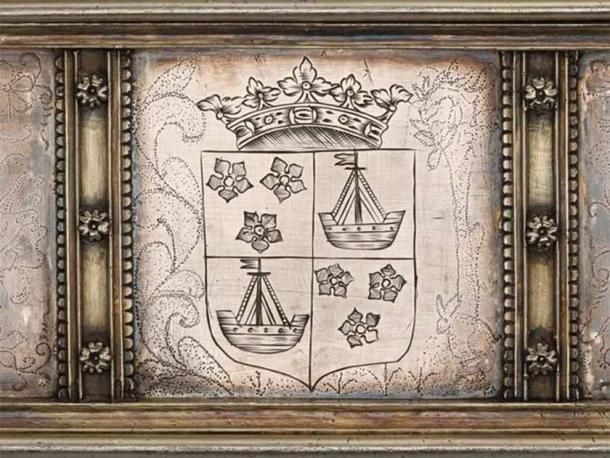
The coat of arms engraved on the Mary, Queen of Scots casket (National Museums Scotland)
The note briefly describes the history of the casket. It claims that it was bought by Anne, Duchess of Hamilton, from Mary, Marchioness of Douglas, who told her that the casket had belonged to Mary, Queen of Scots. This association with the famous queen is a big part of what makes this casket so special.
A History of the Ownership of the Mary, Queen of Scots Casket
An analysis of the handwriting has shown that the letter was written by David Crawford, secretary to Duchess Anne, who wrote it before the duchess’s death in 1716. The note stated:
“…the Duchess of Hamilton, being told by my Lady Marquis that the said box did once belong to the Queen Her Grace, bought the same from the goldsmith after the marchioness’s death in 1674. The Marchioness of Douglas had left it to her younger son, James, who promptly sold it. On hearing this, the Duchess of Hamilton, who had married the marchioness’s older son William, retrieved it from the goldsmith.” (as cited by National Museums Scotland).
This means that the casket has been associated with Mary Queen of Scots from at least the mid-1600s. And it has certainly been treated with this knowledge in mind by the Dukes of Hamilton, who have kept the casket well preserved ever since it came into their possession.
The Casket Letters and the Downfall of Mary, Queen of Scots
One of the more controversial aspects of the casket is the existence of supposed ‘Casket Letters’. The provenance note claimed that the casket carried the letters and tokens of Mary and her third husband, the Earl of Bothwell. Shortly after Mary was overthrown by the Confederate Lords in June 1567, a silver casket was taken by the Earl of Morton from one of Bothwell’s servants. He displayed the casket in front of the Scottish Privy Council, where he forced its lock to examine its contents. Unfortunately, there is no record from the time of what was found inside.
However, the following year, Mary Queen of Scots fled to England, and a casket was produced at a hearing against Mary at Westminster. Letters were found within between Mary and Bothwell. The hearing had been ordered by Elizabeth I after Mary was accused of conspiring with Bothwell to murder her second husband, Lord Darnley. The letters were used as proof of Mary’s guilt, and also that she had an adulterous relationship with Bothwell before Darnley died. These letters were revealed by Mary’s half-brother James, who stood to benefit if she was found guilty.
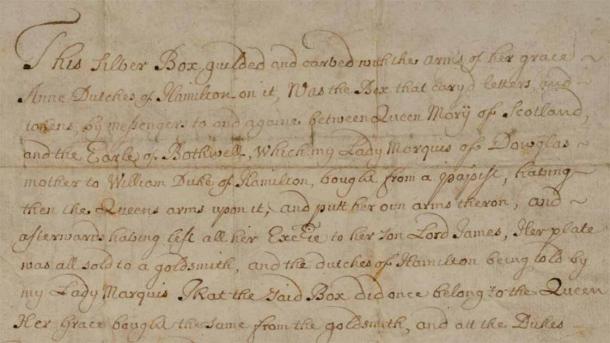
For over 300 years, a handwritten letter was contained inside, tracing its ownership back to Mary, Queen of Scots (National Museums Scotland)
Nothing was ever proven, and many historians believe the documents to be doctored, but Mary, Queen of Scots was held in captivity until her execution in 1587.
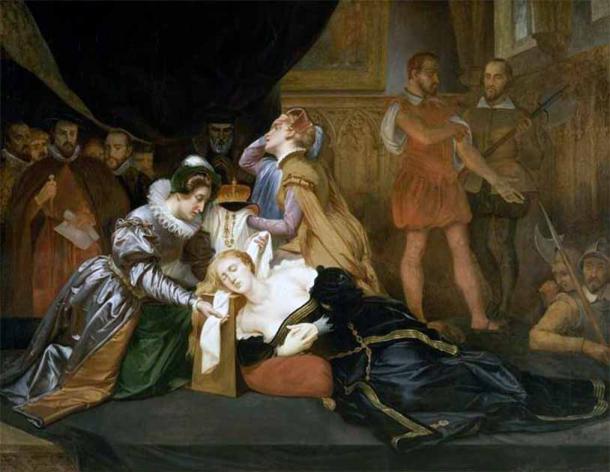
The Execution of Mary, Queen of Scots, 18th century painting by Abel de Pujol (Public Domain)
The Dukes of Hamilton and the Marchioness of Douglas before them believed their casket to be the ‘Letters Casket’ that played such a prominent role in Mary’s life. It is this close connection that gives the casket its special meaning, even if it can’t be said for certain that it’s the same casket.
It is not just its association with Mary that makes the casket so special, though. In the late 1600s, King Louis XIV of France ordered valuable objects like the casket to be melted down so he could pay for his army. Since the casket had already left France by that time, it escaped the same fate as almost every other casket of time, making it extremely rare. That one of the few caskets to escape this fate also happened to belong to one of the most famous monarchs in British history is quite a coincidence.
The casket was purchased by the Scottish government in early 2022. It cost £1.8 million (approximately $2.1 million at the time of writing.) It now sits in the National Museum of Scotland in Edinburgh and is recognized as one of Scotland’s national treasures.
Top image: The Mary, Queen of Scots casket was purchased by the Scottish government in 2022 and is now on display. Source: National Museums Scotland
By Mark Brophy
References
Castelow, E. Biography of Mary Queen of Scots. Historic UK. Available at: https://www.historic-uk.com/HistoryUK/HistoryofScotland/Mary-Queen-of-Scots/
Ferguson, B. May 19, 2022. Silver casket linked to downfall of Mary Queen of Scots secured for the nation in £1.8m deal. The Scotsman. Available at: https://www.scotsman.com/whats-on/arts-and-entertainment/silver-casket-linked-to-downfall-of-mary-queen-of-scots-secured-for-the-nation-in-ps18m-deal-3700229
Mary, Queen of Scots and the silver casket. n.d. National Museums Scotland. Available at: https://www.nms.ac.uk/explore-our-collections/stories/scottish-history-and-archaeology/mary-queen-of-scots/mary-queen-of-scots/mary-queen-of-scots-and-the-silver-casket/
Sherwood, H. 19/5/2022. Casket linked to Mary, Queen of Scots bought for nation for £1.8m. The Guardian. Available at: https://www.theguardian.com/culture/2022/may/19/casket-linked-to-mary-queen-of-scots-bought-for-nation-scotland


















